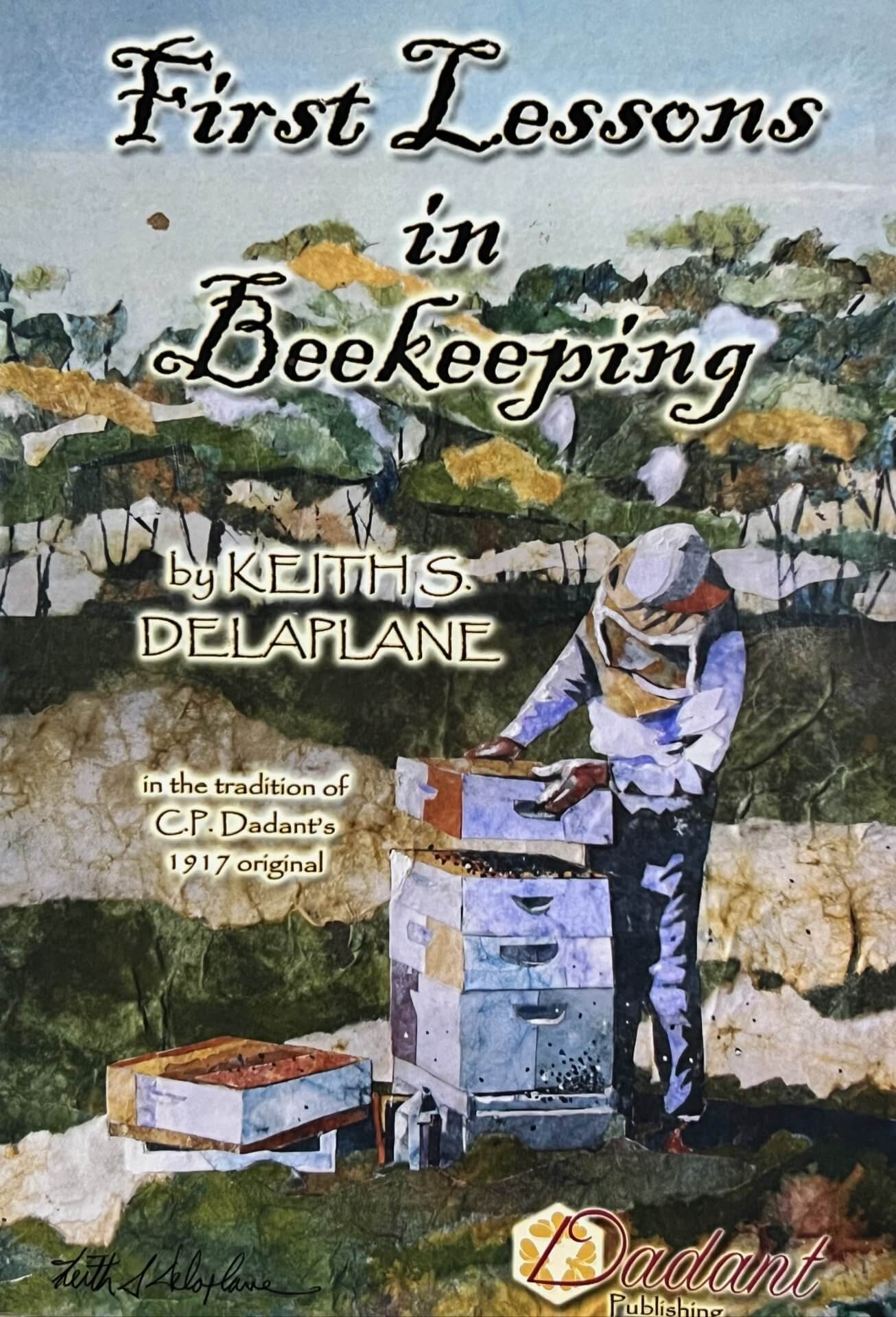Bees & Beekeeping: Present & Past
A Brief History of “First Lessons in Beekeeping”

In my historical work with American apiculture, I am working on dozens of reconstructions using primary sources when possible. Most of these endeavors are many years old. Usually they lack a certain old piece of equipment or a crucial literature reference, maybe from a pamphlet just a few pages long to help complete the story of how something developed. And once finished, the hive or some other artifact has usually become rare, preventing most beekeepers from ever seeing it in person.
That is not the case for the history leading to the next important item. This item is the popular book “First Lessons in Beekeeping,” by Keith S. Delaplane and published by Dadant and Sons, Hamilton, Illinois (see Figure 1).
A historical hint of an older past is given in the subtitle on the cover, where it says “in the tradition of C.P. Dadant’s 1917 original.” The recent history of “First Lessons,” when thousands of copies had been published and beekeeping equipment had standardized (roughly post World War II), was not where I wanted to concentrate. I wanted to study the early history, beginning with the difficult problem of finding the book’s historical origin, a book I knew from references but had never seen. It dated (barely) into the 1870s, a time when most bee books take a nosedive into rarity. I also figured this beginning book would identify beekeeping equipment of that time, increasing its historical value to me. Beginning with this first book, let’s look through some of the various editions, particularly in the equipment they showed, which ultimately lead to the current version in Figure 1.
Most of my information on the historical connections of the books in this article comes from the reference “American Bee Books, an Annotated Bibliography of Books on Bees and Beekeeping from 1492 to 2010,” by Philip A. Mason. Mason (2016) lists some 3,750 entries, and this reference is an incredibly valuable work for serious bee-book collectors and beekeepers interested in the history of apiculture and agriculture. For serious bee-book collecting you must have a reference book for guidance. Considering the immense amount of time it took to compile this massive book, I consider its original price of $175 a good deal, although some sellers are asking $224, which is usual. Mason’s 2016 book needs to become more well known in the beekeeping community.
The book I hunted for years appeared in 1879 as a modest-sized 80-page paperback bearing the title “Bee Culture; or Successful Management of the Apiary” by T.G. Newman (see Figure 2). The book is an introduction to beekeeping, with familiar timeless chapters and other parts more particular to those times. Descriptions of the three types of bees (workers, drones, and queens), along with the brood and comb structure, are standard topics, which we can find in bee books in a hundred years previous or since. However in this time period (late 1870s), apiculture sees an open break with the past ways as “old-foggy opposition” and “fossilized theories.” The move is to embrace a “scientific management of the apiary,” to “arise and shine.” Beekeeping faced a couple of other headwinds that in the 1870s even a beginning beekeeping book would need to confront. …


